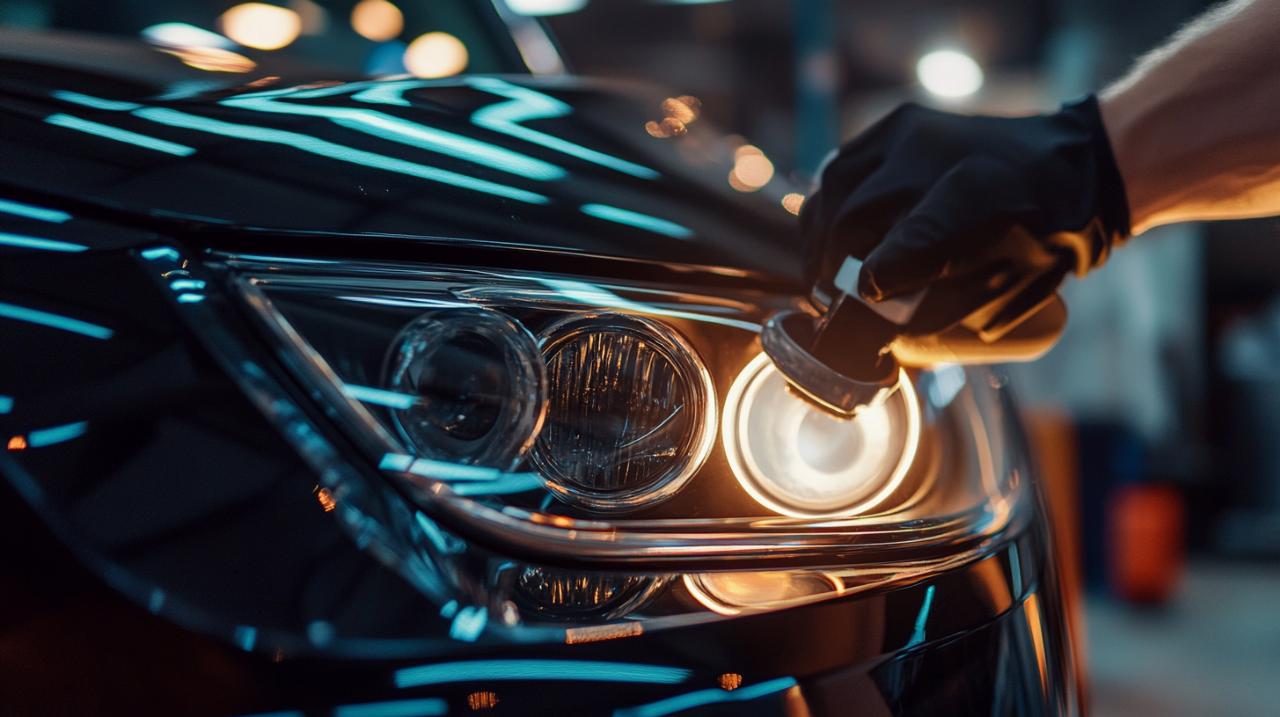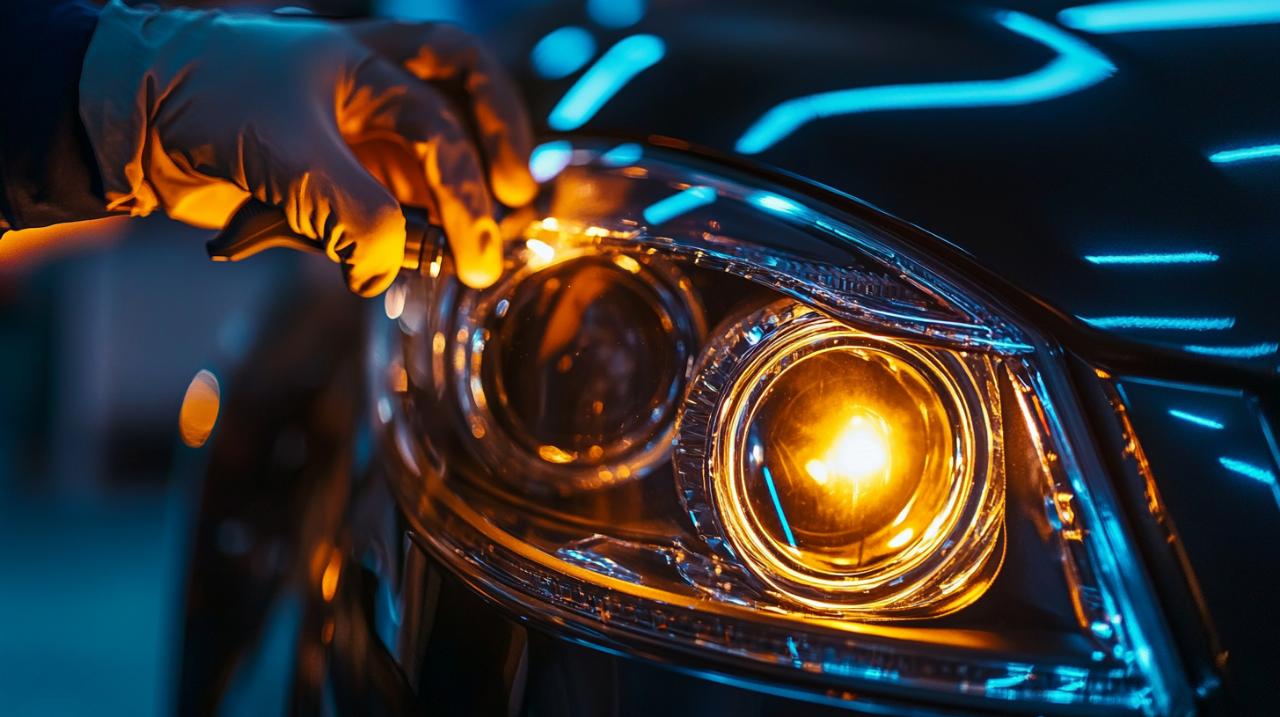Driving along Britain's roads after dark can quickly become a nerve-wracking experience when your headlights fail to illuminate the tarmac properly. Over time, the polycarbonate lenses on your vehicle begin to cloud and yellow, leaving you squinting through the windscreen and struggling to see oncoming hazards. Fortunately, with the right approach and a carefully selected product, restoring your headlights can drastically improve your night-time visibility whilst giving your motor a much smarter appearance. Choosing a suitable restoration solution needn't be a daunting task, especially when you understand what causes the deterioration and what features genuinely matter when selecting a kit.
Understanding why your headlights need restoration
The main culprit behind those hazy, yellowed lenses is prolonged exposure to ultraviolet light and the elements. Every time you park your car outdoors, the sun's UV rays gradually break down the protective coating on your headlight lenses. This process, known as oxidisation, causes the surface to become rough and discoloured. British weather, with its combination of rain, wind, and occasional bouts of sunshine, accelerates this degradation. The result is a layer of cloudiness that scatters the light emitted from your bulbs rather than allowing it to travel in a clear, focused beam. Over months and years, this oxidised layer thickens, turning from a subtle haze into a distinctly yellow or brown tint that drastically reduces the effectiveness of your lighting system.
The science behind cloudy and yellowed headlight lenses
When manufacturers produce modern headlight units, they apply a thin protective coating to the polycarbonate lens to shield it from UV damage. Unfortunately, this coating does not last forever. As it wears away, the unprotected plastic beneath begins to oxidise. This chemical reaction causes microscopic cracks and roughness on the surface, which in turn scatters light in multiple directions instead of projecting it forward. The yellowing effect you observe is essentially a buildup of oxidised plastic particles that absorb and distort the light. Different types of headlights, whether halogen, LED, or xenon, all share this vulnerability, though halogen units tend to show degradation more rapidly due to the heat they generate. Understanding this science helps explain why restoration is not merely a cosmetic fix but a functional necessity for maintaining optimal light transmission.
How degraded headlights affect your safety on british roads
Reduced visibility is the most immediate consequence of cloudy headlights. When your lenses are heavily oxidised, the amount of light reaching the road ahead can drop by more than half, severely compromising your ability to spot pedestrians, cyclists, and road signs in time. This diminished illumination is particularly dangerous on unlit country lanes and during the darker months when British evenings stretch well into commuting hours. Moreover, other drivers may struggle to see your vehicle approaching, increasing the risk of collisions at junctions and roundabouts. Restoring your headlights can improve light transmission by up to ninety percent, transforming your night-time driving experience and significantly enhancing your safety. Beyond the practical benefits, clear headlights also contribute to the overall appearance of your vehicle, making it look well-maintained and cared for.
Key Features to Look for When Selecting a Headlight Restoration Kit

When you begin your search for the best headlight restoration kit recommended by automotive enthusiasts and professionals alike, several key features should guide your decision. A comprehensive kit typically includes multiple grades of sandpaper, starting with a coarser grit to remove the oxidised layer and progressing to finer grits for smoothing the surface. Polishing compounds are essential for achieving that crystal-clear finish, whilst a UV sealant ensures long-lasting protection against future degradation. Some kits also come with drill attachments, making the sanding and buffing process quicker and less labour-intensive. Application tools such as scrubbing pads, cleaning solutions, and pre-moistened wipes are often included to streamline the restoration process. Brands that provide detailed instructions and aftercare guidance tend to yield better results, as following the correct sequence of steps is crucial for achieving professional-quality outcomes.
Comparing different restoration methods and products available
The market offers a wide range of restoration kits, from basic single-step solutions to multi-stage professional systems. Budget-friendly options, priced around ten to fifteen pounds, often include the essentials but may lack advanced features such as ceramic or graphene coatings. Mid-range kits, typically costing between eighteen and twenty-five pounds, offer a more complete set of tools and materials, including various sandpaper grits and high-quality polishing compounds. Premium kits can reach up to forty-four pounds and may include advanced sealants with warranties extending up to five years, offering superior weathering protection and durability. One-step kits appeal to those seeking convenience, requiring minimal effort and time, usually around thirty to sixty minutes. Multi-step kits, whilst more involved, deliver superior clarity and longevity, often restoring light transmission to near-original levels. Brands such as Sylvania, 3M, Cerakote, and Meguiar's have established strong reputations, consistently receiving positive reviews on platforms like Amazon, where users highlight ease of use and lasting results.
Cost-effectiveness: saving money versus replacing entire headlight units
One of the most compelling reasons to invest in a restoration kit is the substantial cost saving compared to replacing your entire headlight unit. Professional services for headlight replacement can range from twenty pounds for basic work to well over two thousand pounds for high-end vehicles with specialised lighting systems. By contrast, a quality restoration kit costs between ten and forty-four pounds, offering a budget-friendly alternative that you can apply yourself at home. The DIY approach not only saves money but also provides a sense of accomplishment and allows you to maintain your vehicle on your own schedule. Many kits are designed to be user-friendly, with clear instructions that even those with limited mechanical experience can follow successfully. The process typically involves cleaning the headlight lens, taping around the edges to protect the paintwork, sanding the surface with progressively finer grits, applying a polishing compound, buffing to a high shine, and finally sealing with a UV protectant. This sequence, when executed carefully, can restore your headlights to a near-new condition, enhancing both safety and the overall aesthetic appeal of your motor.
